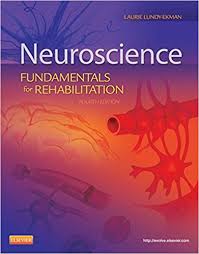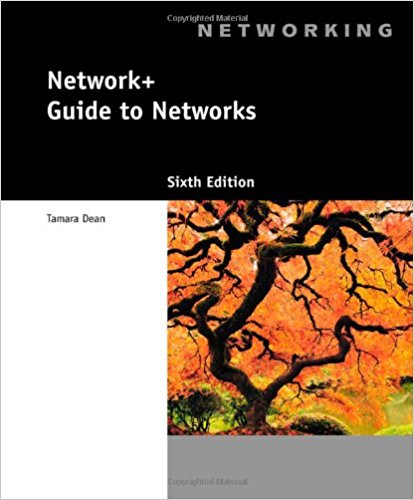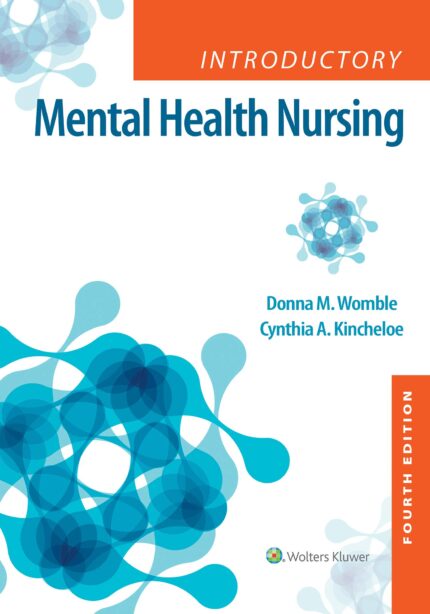Neuroscience Fundamentals Rehabilitation 4th Edition By Lundy Ekman – Test Bank
Lundy-Ekman: Neuroscience: Fundamentals for Rehabilitation, 4th Edition
Chapter 4: Neuroplasticity
Test Bank
1. Neurons that are deprived of oxygen for a prolonged period:
A. Release glycine, which inhibits the postsynaptic neurons and prevents neural function even in neurons not directly affected by oxygen deprivation.
B. Become inactive and slowly regenerate.
C. Release glutamate, which causes overexcitation of the surrounding neurons.
D. A, B, and C
E. None of the above
ANS: C
Rationale: When a person suffers a stroke or traumatic injury, neurons in the brain that are deprived of oxygen for a prolonged period die and do not regenerate. Oxygen-deprived neurons release large quantities of glutamate, an excitatory neurotransmitter, from their axon terminals.
2. Excitotoxicity begins with:
A. Excessive production of lactic acid.
B. Destruction of cellular proteins.
C. Cellular edema.
D. Persistent binding of glutamate to N-methyl-D-aspartate (NMDA)–type receptors in the postsynaptic cell membrane.
E. Interference of mitochondria functions.
ANS: D
Rationale: First, glutamate binds persistently to the NMDA-type glutamate receptor in the cell membrane. Stimulation of this receptor results in an influx of calcium ions (Ca+2) into the cell, and indirectly facilitates the release of internal Ca+2 stores. An influx of sodium ions (Na+) into the cell results in further stimulation of NMDA receptors and an additional influx of Ca+2 into the cell. Channels that are permeable to Ca+2 open because of the injury. With the increase in Ca+2 inside the cell, more potassium ions (K+) diffuse out of the cell, requiring increased glycolysis that provides energy for the Na+/K+ pump to actively transport K+ into the cell. Together, the increased glycolysis and the increased Ca+2 lead to several destructive consequences for neurons.
3. Cellular effects of excitotoxicity include:
A. Excessive production of lactic acid.
B. Destruction of cellular proteins.
C. Cellular edema.
D. Interference of mitochondria functions.
E. All of the above
ANS: E
Rationale: Excitotoxicity causes excessive production of lactic acid, destroys cellular proteins, causes cellular edema, and interferes with the function of mitochondria.
4. Which one of the following types of memory is affected by an injury to the hippocampus?
A. Memory of how to ride a bicycle
B. Memory of names and events
C. Memory of how to tie shoe laces
D. Both A and B
E. A, B, and C
ANS: B
Rationale: The hippocampus, located in the temporal lobe, is essential for processing memories that are easily verbalized. For example, the hippocampus is important in remembering names and events (declarative memory) but not in remembering how to perform motor acts (procedural memory; riding a bicycle and tying shoe laces are examples of procedural memory).
5. In the mature central nervous system (CNS), axonal regeneration is impeded by which of the following?
A. Glial scar formation
B. Absence of neural growth factor
C. Release of growth-inhibiting factors
D. Both A and B
E. A, B, and C
ANS: E
Rationale: Development of glial scars, limited expression or complete absence of nerve growth factor (NGF), and growth-inhibiting factors prevent functional axonal regeneration in the brain and spinal cord.
6. Constraint-induced movement after a stroke requires which one of the following?
A. Immobilization of the affected upper extremity (UE) to control spasticity
B. Repetitive closed-chain resistance training
C. Aggressive range of motion and exercise within 12 hours after a stroke
D. Repetitive, task-specific functional movements of only the affected UE
E. Weight bearing and prolonged stretching of the affected UE
ANS: D
Rationale: Constraint-induced movement is one type of task-specific training used in individuals with chronic dysfunction resulting from a stroke. In this technique, the use of the unaffected UE is constrained by a sling. The patient then undergoes intense practice of functional movements with the affected UE.
7. Learning an individual’s name requires:
A. Sprouting
B. LTP
C. Habituation
D. Central chromatolysis
ANS: B
Rationale: Experience-dependent plasticity requires the synthesis of new proteins, the growth of new synapses, and the modification of existing synapses. With repetition of a specific stimulus or the paring of presynaptic and postsynaptic firing, the synthesis and activation of proteins alter the neuron’s excitability and promote or inhibit the growth of new synapses, especially at dendritic spines. Several mechanisms of experience-dependent plasticity occur, depending on the type of synapse and location involved; LTP is one of these mechanisms.
8. Experience-dependent plasticity is also referred to as which of the following?
A. Use-dependent plasticity
B. Activity-dependent plasticity
C. Habituation
D. Both A and B
ANS: D
Rationale: Experience-dependent plasticity is also referred to as use-dependent or activity-dependent plasticity.
9. After learning how to play the violin:
A. Large, diffuse regions of the brain show increased activity.
B. Small, distinct regions of the brain show increased activity.
C. Small, distinct regions of the brain show increased activity while playing the flute.
D. None of the above
ANS: B
Rationale: With the repetition of a task, a reduction in the number of active regions occurs in the brain. Eventually, when a motor task is learned, only small, distinct regions of the brain show increased activity when performing the task. For example, learning to play a musical instrument requires numerous brain regions. As skill increases, fewer areas are activated because less attention is required, motor control is optimized, and only the brain areas required to perform the task efficiently are active. Eventually, playing the instrument requires only a few small, specific regions.
10. Which one of the following processes contributes to experience-dependent plasticity?
A. Synthesis of new proteins
B. Growth of new synapses
C. Modification of existing synapses
D. A, B, and C
ANS: D
Rationale: Experience-dependent plasticity requires the synthesis of new proteins, the growth of new synapses, and the modification of existing synapses.














Reviews
There are no reviews yet.